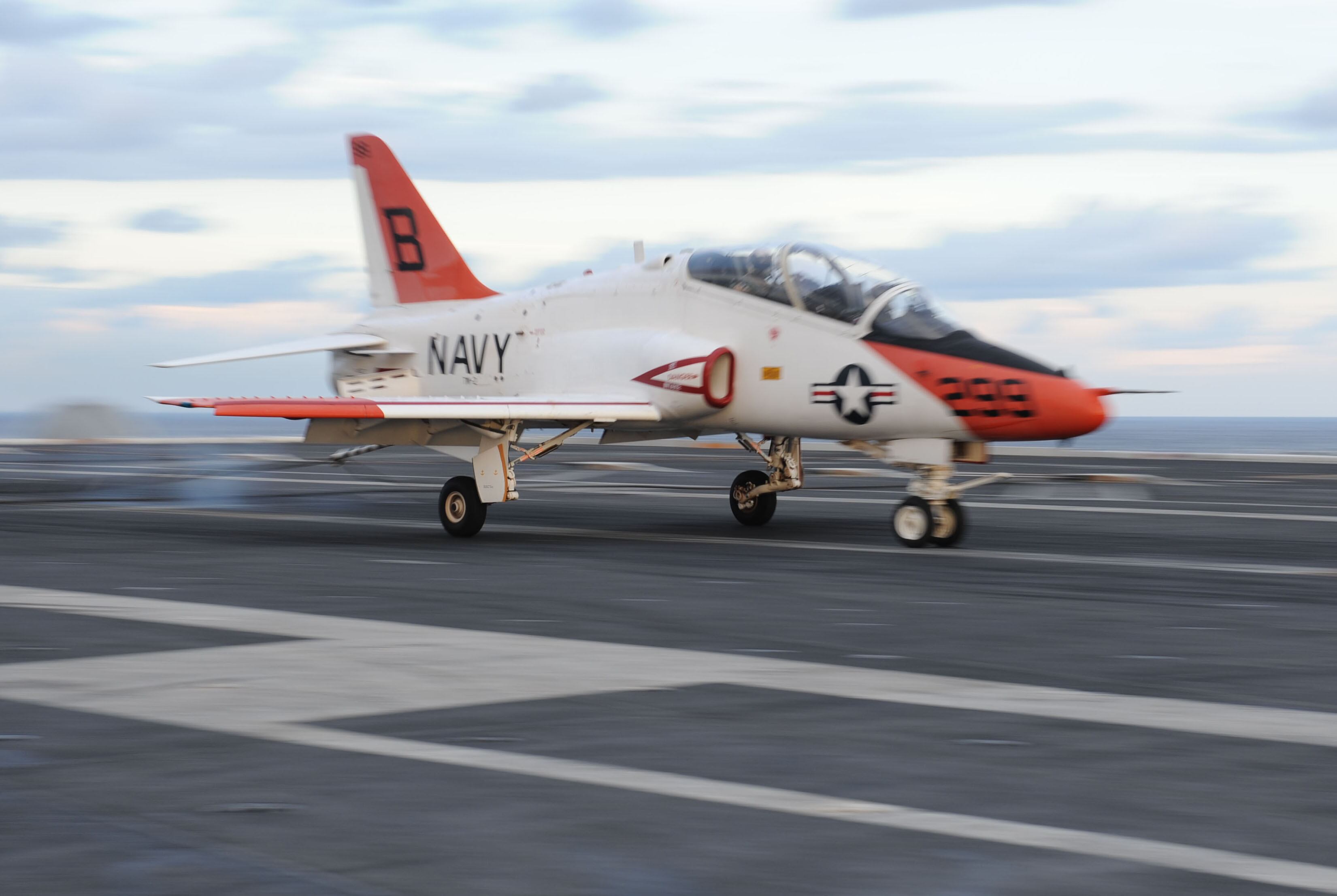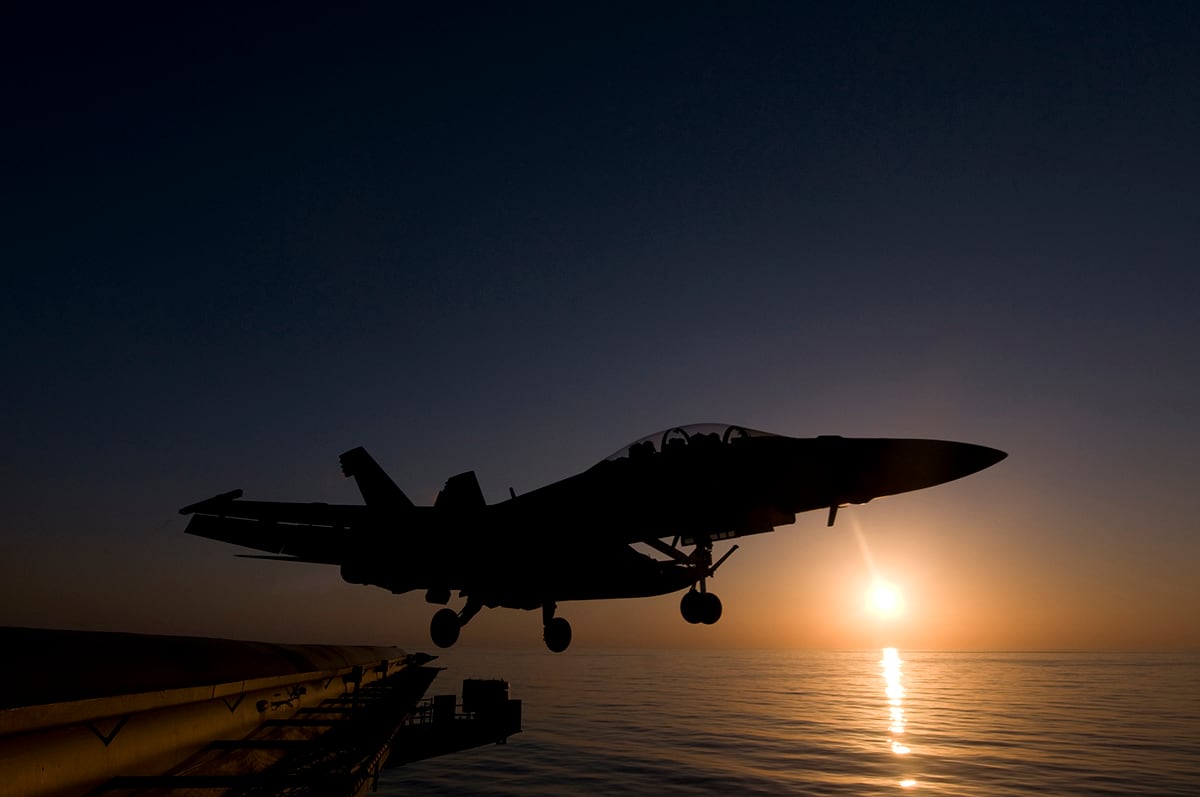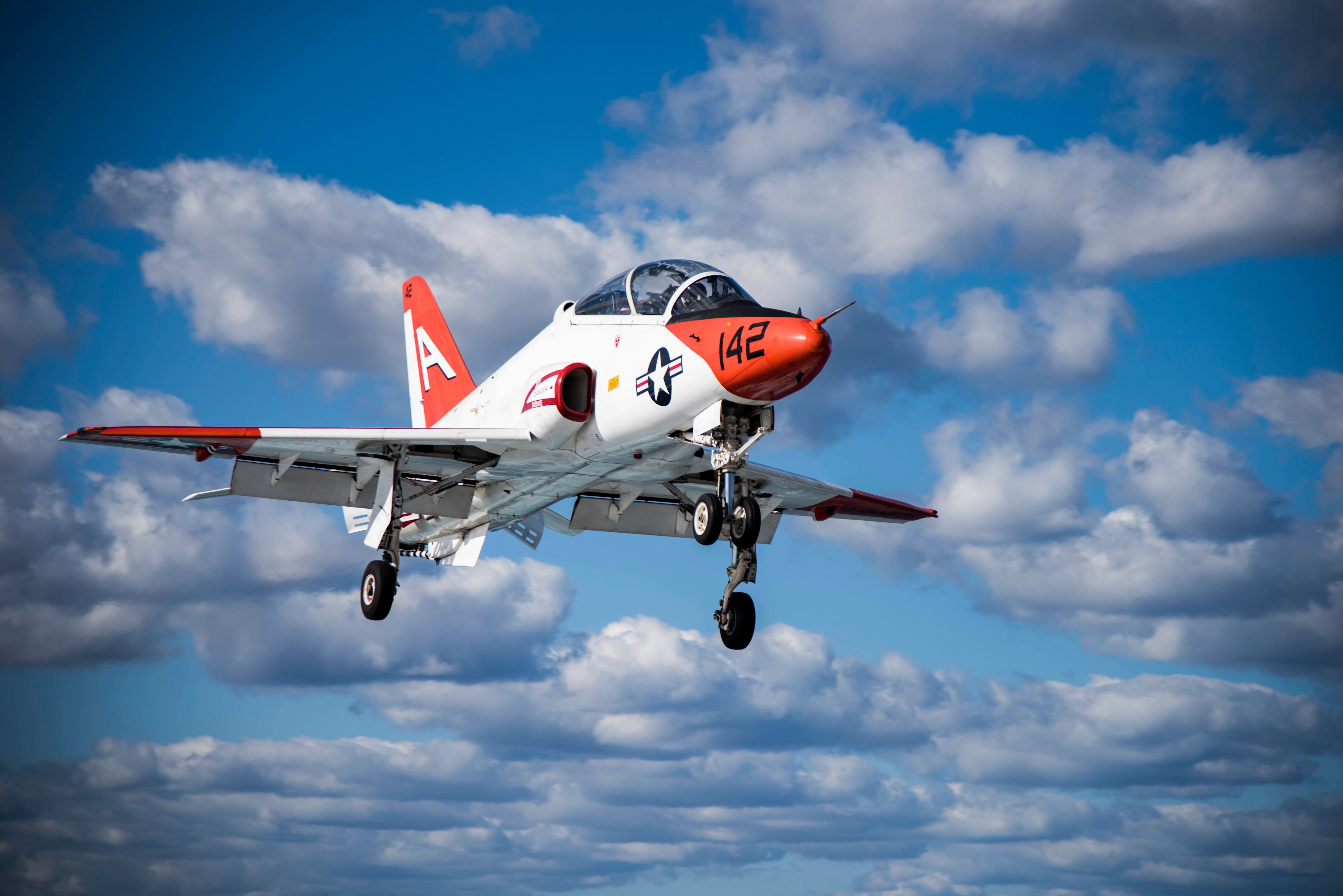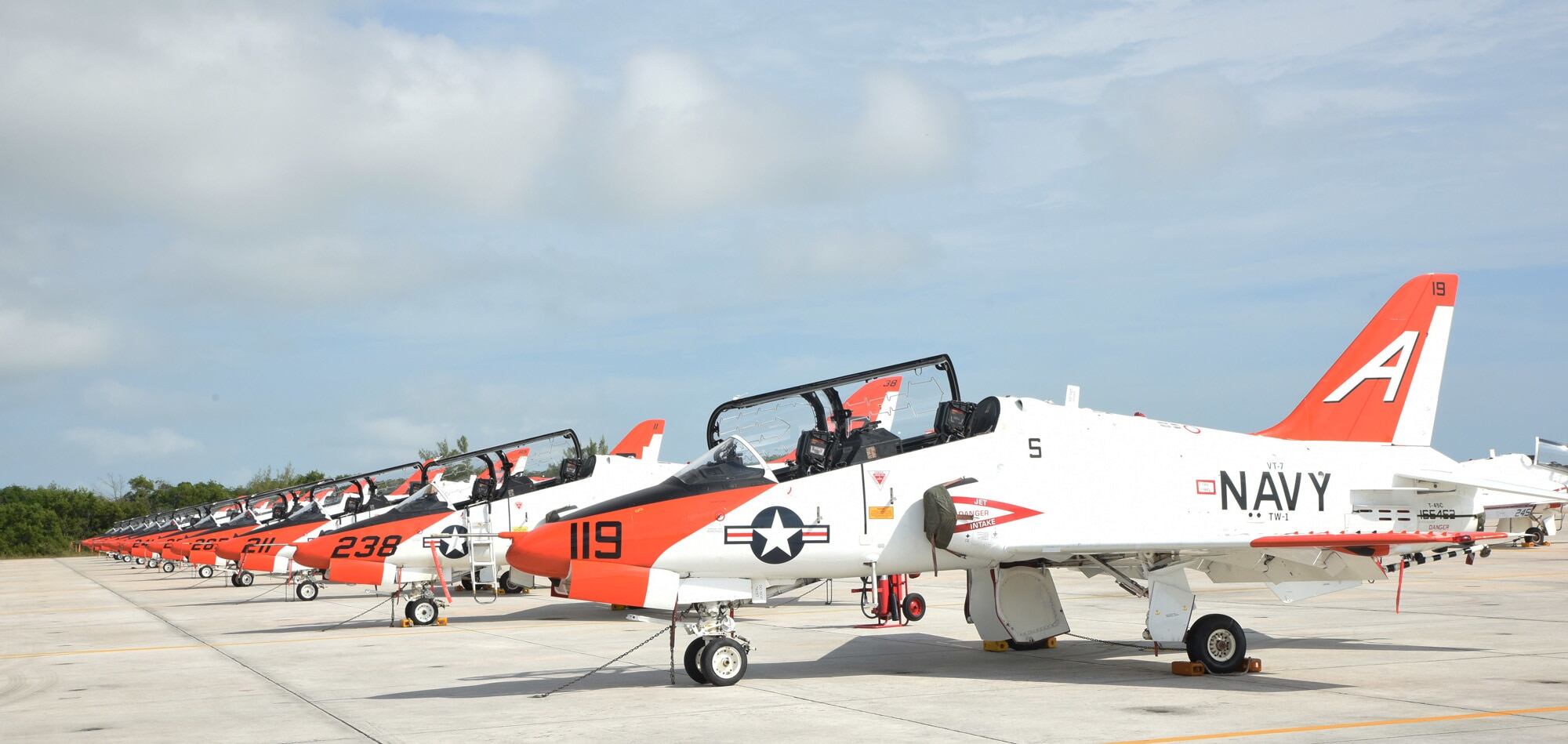The Navy’s official investigation into the Oct. 1 crash in rural Tennessee of a T-45C Goshawk from Training Squadron 7 concluded the crash was the fault of the instructor pilot, even though at the time of impact, he wasn’t at the controls.
Investigators said that the instructor pilot was “flat-hatting” by flying and directing his student to fly too close and too fast to ground, which is against the Navy’s procedure for such training of student pilots, the Navy’s investigation into the crash concluded.
The report also said that the investigation shows that such out-of-bounds flights and unauthorized training had become part of culture in the VT-7, but also throughout all the Navy’s tactical jet training, which investigators called a “failure of leadership.”
RELATED

Lt. Patrick Ruth, the instructor pilot, and Lt. j.g. Wallace E. Burch were killed on the training flight.
“This mishap resulted from individual pilot error, a culture within VT-7 and Chief of Naval Air Training at large, which fostered [instructor pilots] and [student naval aviators] flying their aircraft beyond the bounds of approved Naval Air Training Command curriculum,” Rear Adm. James Bynum, who commands all pilot training in the Navy, wrote in the report’s executive summary on April 9.
Bynum noted that the flight’s purpose was low altitude awareness training and they were initially on an approved training route, but that the instructor, Ruth, deviated from proper procedure and also encouraged Burch to do the same.
Ruth, Bynum said, was “flat hatting,” which he described as “flight conduced at low altitude and/or a high rate of speed for thrill purposes,” and had been seen doing the same thing on the weekend training flights the days before the mishap.
“The investigation further demonstrated [Ruth] was overly confident, nonchalant and aggressive at low altitude training, with limited awareness of the performance capabilities of the T-45C in the [low altitude awareness training] environment,” Bynum wrote. “This attitude influenced [Ruth’s} instructional style and conditioned [Burch] to fly the aircraft in an aggressive manner, without correction from [Ruth].”
In the moments leading up to the crash, Burch was initially at the controls, flying as per Ruth’s instructions in a manner that exceeded approved rules for this type of training.
“This included aggressive ridge line crossings and decending turns that took them below the minimum altitude of 500 feet above ground level many times, to include potentially as low as 210 feet,” Bynum wrote in describing the flight.
RELATED

The Navy does train this way at times, but not at the basic student level, Bynum pointed out, and said advanced skills like these should only be taught at fleet replacement squadrons that are preparing pilots to join operational squadrons in the fleet.
Thirty-five seconds before they crashed, Ruth told Burch to deviate from the approved course and told him they would simply follow the terrain.
“Ruth assumed control of the aircraft 26-seconds before the mishap and commenced a defending turn to demonstrate terrain following techniques,” Bynum wrote.
Just 10 seconds before the impact, Ruth directed Burch to take control of the aircraft and make a hard right turn.
“What neither [Ruth] nor [Burch] knew was that they were too slow and too low relative to the rising terrain in front of them and that the attempted control input to recover was beyond the limitations of the aircraft,” Burch wrote.
“In response to their maneuvers, the aircraft entered into a stall. By the time the aircrew realized they were in extremis, it was too late to eject safely.”
Bynum also said it was questionable that Ruth was even qualified to fly the T-45C or teach the low-level maneuvers, because there was no record he’d completed the requisite training in the T-45C himself and in the end formally concluded: “It was their actions flying the aircraft in violation of the [chief of naval air training] syllabus and training objectives that resulted in the mishap.”
RELATED

Still, Bynum approved the investigators recommendation that Ruth and Burch’s deaths “be found in the line of duty and not due to misconduct.”
In the wake of the crash, Bynum ordered a review of the low altitude and directed that every instructor pilots’ records be reviewed to ensure they are qualified, in an attempt to put a stop to a culture of training beginning pilots in techniques that are too advanced for them to handle.
Because leadership tolerated this shift in culture, it was taken by the instructors as tacit approval it was ok.
Though Bynum directed no punitive actions be taken against anyone, he says that he’s taken action to ensure that going forward that training is conducted within the rules and that all instructors are totally qualified to train their students.
“The syllabus was designed to be safe when executed within existing guidance, because it was designed with built-in risk control measures at every level,” Bynum wrote.
“This mishap is a glaring example of just how tragic the consequences can be when there is either a lack of flight discipline or willful deviation from standards.”
Mark D. Faram is a former reporter for Navy Times. He was a senior writer covering personnel, cultural and historical issues. A nine-year active duty Navy veteran, Faram served from 1978 to 1987 as a Navy Diver and photographer.




